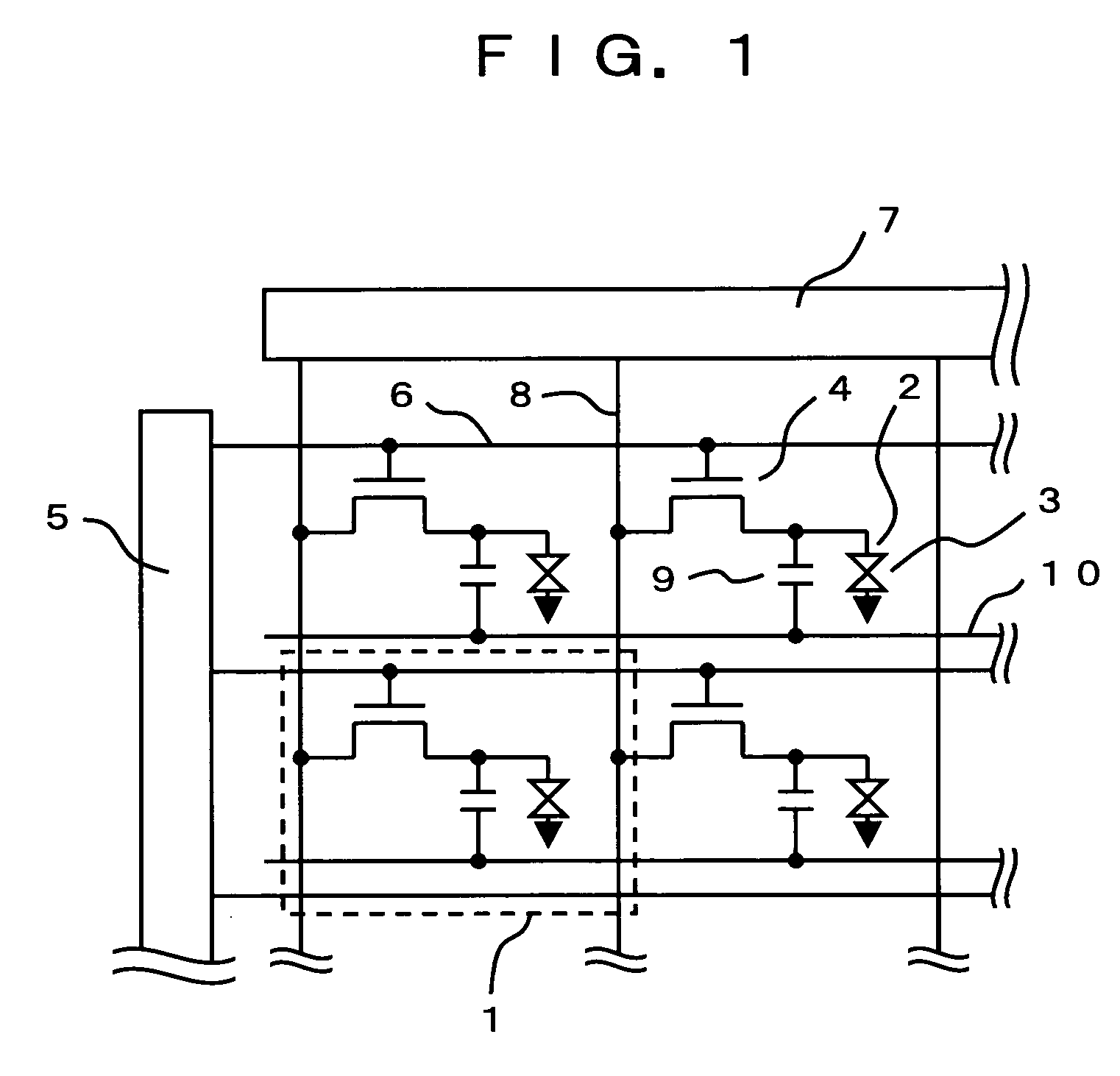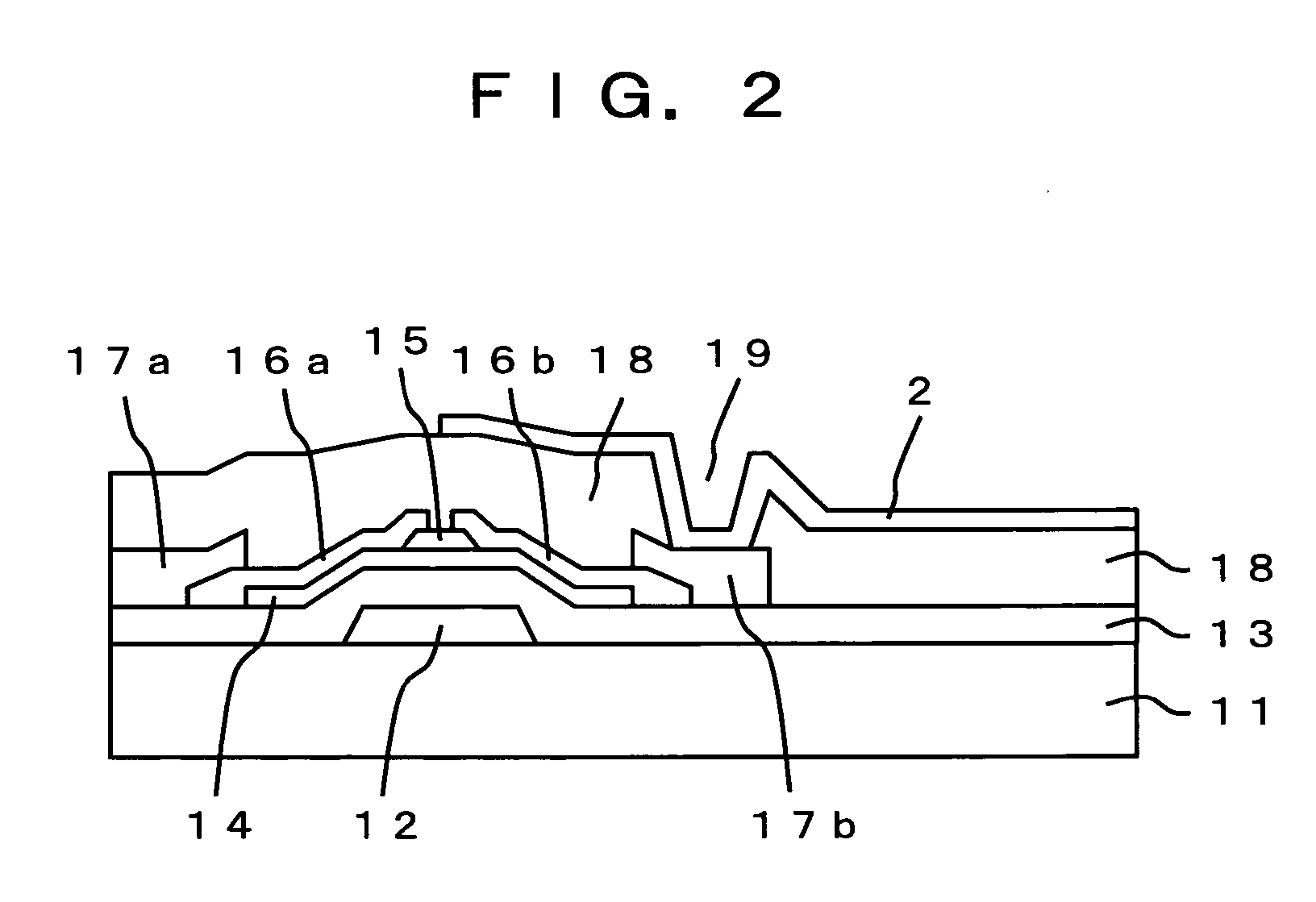Liquid crystal display device and dielectric film usable in the liquid crystal display device
a technology of liquid crystal display device and dielectric film, which is applied in the direction of thin material processing, instruments, chemistry apparatus and processes, etc., can solve the problems of low number of processes required for deposition, difficulty in producing organic siloxane dielectric film with higher thickness, etc., and achieve high
- Summary
- Abstract
- Description
- Claims
- Application Information
AI Technical Summary
Benefits of technology
Problems solved by technology
Method used
Image
Examples
example 1
[0087] Example 1 of the present invention relates to a method for forming a dielectric film suitable as an interlayer dielectric film of a liquid crystal display device and to a dielectric film obtained by the method. As the starting material for the dielectric film of Example 1, organic poly-silazane, which has a methyl group as an organic group and has a ratio of silicon content to carbon content (C content / Si content) being 1 in the element ratio is used, and a raw material solution, which contains a photo-acid generator diluted by propylene-glycol-monomethyl ether acetate (PGMEA) is used. This raw material solution was processed by spin coating at 500-3000 rpm on a silicon substrate or on glass substrate, and prebaking was performed using hot plate in nitrogen atmosphere at 90° C. for 90 seconds. The coated film thus obtained was processed by overall exposure, humidification, and thermal curing in this order under the condition shown in Table 1. For the overall exposure, a low p...
example 2
[0099] Example 2 relates to the liquid crystal display device of the present invention. In this Example 2, a process to form low temperature polysilicon TFT was taken as an example. FIG. 9 is a plan view of one pixel unit of TFT in the liquid crystal display device of the present invention. In the pixel, there are provided TFT comprising a polysilicon film 23a, a gate electrode 25a, a source wiring 28a, and a drain wiring 28b, and a capacity electrode 25b. Also, a pixel electrode 33a and the drain wiring 28b are superimposed on each other with the interlayer dielectric film interposed therebetween. FIG. 15 represents cross-sectional views, each showing TFT in the liquid crystal display device of the present invention along the line A-A′ in FIG. 9.
[0100]FIG. 10-FIG. 15 each represents drawings to explain a process for forming low temperature polysilicon TFT on the thin-film transistor substrate of the liquid crystal display device of active matrix mode. Description will be given bel...
PUM
 Login to View More
Login to View More Abstract
Description
Claims
Application Information
 Login to View More
Login to View More - R&D
- Intellectual Property
- Life Sciences
- Materials
- Tech Scout
- Unparalleled Data Quality
- Higher Quality Content
- 60% Fewer Hallucinations
Browse by: Latest US Patents, China's latest patents, Technical Efficacy Thesaurus, Application Domain, Technology Topic, Popular Technical Reports.
© 2025 PatSnap. All rights reserved.Legal|Privacy policy|Modern Slavery Act Transparency Statement|Sitemap|About US| Contact US: help@patsnap.com



